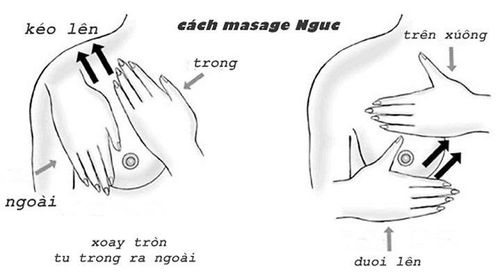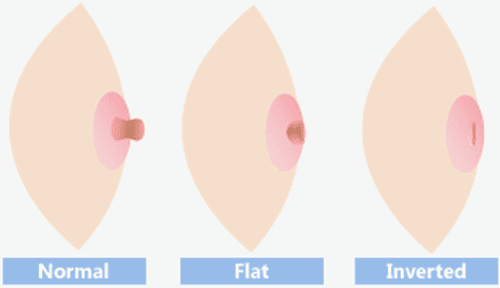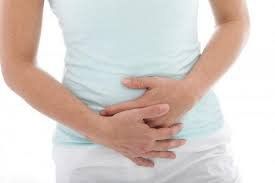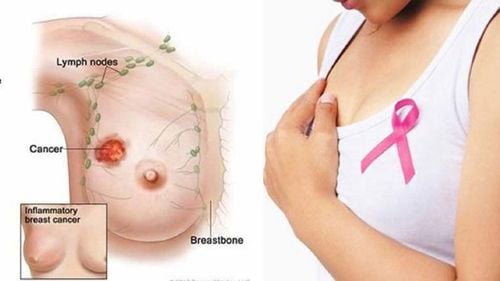This is an automatically translated article.
The article was professionally consulted by BSCK II Tran Thi Mai Huong - Obstetrician and Gynecologist - Obstetrics and Gynecology Department - Vinmec Hai Phong International General HospitalDuring pregnancy and lactation, women often have many changes and problems related to breasts. If you do not take care of your breasts during pregnancy and breastfeeding properly, mothers will be prone to abscesses or quite serious mastitis.
1. Breast care during pregnancy
During pregnancy, one of the obvious changes of a pregnant woman is that her breasts enlarge and grow with the development of pregnancy. The reason is due to the simultaneous stimulation from the pituitary gland, the placenta produces milk, estrogen and progesterone, increasing the ducts of the mammary glands as well as the lobules to prepare for the upcoming breastfeeding process. In addition, the pregnant woman's breasts have unusual symptoms such as:
Nipples are larger and turn black; The areola is dark in color; Scattered knot-like protrusions around the areola; The udder secretes a few drops of a thin, yellow fluid towards the end of pregnancy. During this period, women should pay attention to breast care as follows:
Choose a bra specifically for pregnant women, the right size, the material is cool, avoid being too wide to sag or too tight to cause breast tissue. hurt; Regularly bathe and clean your breasts. It is recommended to wash the nipple with clean water once a day to remove accumulated secretions; Prioritize choosing mild body wash products, do not use antibacterial soap to clean the breasts to avoid drying out the skin and cracking the nipples.

Wash the nipples and udders; Use your hands to massage the breasts up and down, then pull the areola skin to the left - right, top - bottom and vice versa; Perform several times a day, about 5 minutes each time; If it is not possible to pull the nipple out by hand, you can refer to some specialized suction aids and follow the instructions for use listed on the package.
2. Breast care while breastfeeding
2.1. How to clean breasts and nipples During breastfeeding, mothers need to take care of their breasts and especially the nipples carefully by:
Wash your hands before touching your breasts; Change milk pads regularly to keep nipples dry; The humid environment will create favorable conditions for bacteria to grow and decompose the skin, so do not use plastic pads with poor ventilation; Squeeze a little milk onto the nipple and surrounding areola to hydrate the skin and protect against infection after each feeding; When the baby is finished feeding, it is necessary to check the nipple, if cracks or scratches are detected, it must be handled soon to avoid infection; Clean the udder with clean water. Do not apply body wash soap directly to the nipples as these chemicals can strip the skin of its natural moisture, causing the nipples to dry out and crack. Wash gently, do not rub strongly on 2 breasts; Wait until the nipples are completely dry before putting on a bra.

2.2. Care for erect breasts Method 1: Cold compress
Wrap a cold pack in a towel, or use a frozen pack or a cold wet washcloth; Place a cold pack on your breasts for a few minutes to reduce swelling; Do not apply too long or the temperature is too cold to avoid damaging the skin. Method 2: Apply warm
Can refer to the following ways:
Take a shower with warm water; Place a warm washcloth on your breasts for a few minutes until the milk begins to flow; Use a hot pack or wrap a hot water bottle in a cloth towel. Note that after applying cold or hot compresses, mothers should gently massage their breasts and try expressing a little milk to soften the nipples and surrounding halos. Wait until the breast is no longer erect, then feed the baby.
Trắc nghiệm: Những điều cần biết về kiêng cữ sau sinh
Sau sinh, cơ thể sản phụ sẽ có rất nhiều sự thay đổi, việc thực hiện tốt các kiêng cữ sau sinh và bổ sung đầy đủ các chất dinh dưỡng cho cơ thể sẽ giúp ích rất nhiều trong quá trình hồi phục sức khỏe. Bài trắc nghiệm dưới đây sẽ giúp mọi người có cái nhìn tổng quan về kiêng cữ sau sinh và thực hiện sao cho phù hợp nhất.The following content is prepared under supervision of Thạc sĩ, Bác sĩ y khoa, Tạ Quốc Bản , Sản phụ khoa , Khoa Sản phụ khoa - Bệnh viện Đa khoa Quốc tế Vinmec Phú Quốc
2.3. Caring for engorged breasts When a mother's breasts are full of milk, it not only causes pain, but sometimes also makes the baby unable to drain the milk. This situation is easily aggravated if the mother does not know how to take care of the breast while breastfeeding as follows:
Gently rub the nipple to stimulate milk secretion before feeding the baby; Use a warm towel to massage the breasts when the breasts are tight, with a lot of milk causing tension; The udder comb can be used from the top down to open the milk glands, combined with gentle mammary massage to help reduce milk engorgement; Hold the baby in the correct position and practice latching on to the breast properly. In some cases, the breast is too full to make the baby unable to latch on normally, then the mother should use her hands to express a little milk before each feeding to soften the areola, making it easier for the baby to suckle.
2.4. Caring for blocked milk ducts Blocked milk ducts or blocked milk ducts have the risk of forming curdled milk blocks in the udder, causing pain for the mother. Clogged nipple holes will manifest as one or more white spots. Blocked milk ducts can be caused by:
Incorrect breastfeeding; Choosing the wrong bra; Wearing clothes that are too tight; Sudden decrease in the number of feedings; Cuong means milk; Breast infection. To prevent and overcome blocked milk ducts, women need to:
Maintain correct posture while breastfeeding; Train the baby to grasp the nipple properly; Change your baby's position during feedings to empty all parts of the breast; Put the baby's chin close to the blocked area to relieve and circulate milk; Use a hand or a pump to drain the milk from the udder; Do not stop breastfeeding to avoid engorgement and make the situation worse; Apply a towel or bathe with warm water, and at the same time use your hands to massage the breasts in two directions. One is from around to the nipple to push the blockage to the outside and vice versa to help open the milk duct. If the blocked milk does not improve within 1-2 days, the mother should go to a medical facility to be examined by a specialist and instructed on how to handle it effectively.

2.5. Caring for Inflammatory Breasts Mastitis can occur at any time during lactation, but is most common around the first 6 weeks postpartum. This condition is the result of breast engorgement or blocked milk that is not effectively managed. Symptoms of mastitis are:
Edema, hard and red hot swelling 1 chest area; Usually accompanied by fever if the mother does not take painkillers; Muscle pain and breast pain. Mastitis is easily confused with engorgement of the mammary gland, and localized redness and swelling in a part of the breast is the distinguishing sign. If not detected and treated early, mastitis will progress to an abscess within 48-72 hours. Therefore, when experiencing symptoms of mastitis, women should immediately go to a medical facility for examination and if there is no improvement after 2-3 days, they must be re-examined.
Note that even during treatment, it is still possible to continue breastfeeding and try to improve the technique so that the baby can fully drain the breast. Besides, cool compress is an effective method to help reduce pain symptoms that mothers should refer to.

Breast milk is the optimal source of nutrition for babies and babies need to be exclusively breastfed for the first 6 months. Therefore, taking care of the breasts during pregnancy and lactation is very necessary and beneficial for both mother and child. If the breast shows signs of swelling, pain, pain, ... the mother should immediately go to a specialized medical facility to be instructed by the doctor on how to treat and prevent infection.
Vinmec International General Hospital is one of the hospitals that not only ensures professional quality with a team of leading medical doctors, modern equipment and technology, but also stands out for its examination and consultation services. comprehensive and professional medical consultation and treatment; civilized, polite, safe and sterile medical examination and treatment space.
Please dial HOTLINE for more information or register for an appointment HERE. Download MyVinmec app to make appointments faster and to manage your bookings easily.















